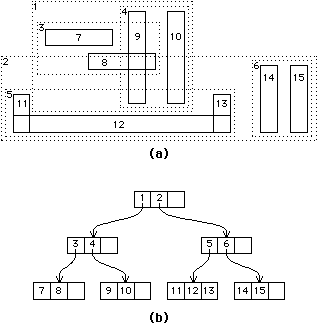Hello Folks , today we are going to demonstrate a simple application , which can generate the core dump of the memory allocated to objects at runtime.
Below is illustrated a simple c++ program , along with a trial run of the output try it and a fair analysis yields the fact about allocation of memory to the objects at runtime .
As an enhancement , we can compile the program twice into 2 object files , and then run them simultaneously on two terminals , with considerable delay to affix the illustrated concept .
// The program is to be tested in any Linux environment
// We have tested the program in Fedora core 12
#define MARKERSIZE 5
#define BEGMARKER "
" set it to
#define ENDMARKER "" set it to
#include
#include
#include
#include
#include
#include
using namespace std;
class A
{
char beginA[MARKERSIZE];
int i;
char b;
char endA[MARKERSIZE];
public:
A() : i(0xabcd), b('X')
{
std::cout << "CTOR" << std::endl;
strcpy(beginA,BEGMARKER);
strcpy(endA,ENDMARKER);
}
~A()
{
std::cout << "DTOR" << std::endl;
}
void displayme()
{
printf("ADDR BEG = %p\n",beginA);
printf("ADDR I = %p\n", &i);
printf("ADDR B = %p\n", &b);
printf("ADDR END = %p\n",endA);
}
};
int main()
{
for(int i=0 ; i<10 ; ++i)
{
A *a = new A();
a->displayme();
//delete a; remove this comment in the second run .
}
//send a SIGSEGV signal to generate core
pid_t pid = getpid();
kill(pid,11);
}
Trial Run :
ADDR BEG = 0x8fca008
ADDR I = 0x8fca010
ADDR B = 0x8fca014
ADDR END = 0x8fca015
CTOR
ADDR BEG = 0x8fca020
ADDR I = 0x8fca028
ADDR B = 0x8fca02c
ADDR END = 0x8fca02d
CTOR
ADDR BEG = 0x8fca038
ADDR I = 0x8fca040
ADDR B = 0x8fca044
ADDR END = 0x8fca045
CTOR
ADDR BEG = 0x8fca050
ADDR I = 0x8fca058
ADDR B = 0x8fca05c
ADDR END = 0x8fca05d
CTOR
ADDR BEG = 0x8fca068
ADDR I = 0x8fca070
ADDR B = 0x8fca074
ADDR END = 0x8fca075
CTOR
ADDR BEG = 0x8fca080
ADDR I = 0x8fca088
ADDR B = 0x8fca08c
ADDR END = 0x8fca08d
CTOR
ADDR BEG = 0x8fca098
ADDR I = 0x8fca0a0
ADDR B = 0x8fca0a4
ADDR END = 0x8fca0a5
CTOR
ADDR BEG = 0x8fca0b0
ADDR I = 0x8fca0b8
ADDR B = 0x8fca0bc
ADDR END = 0x8fca0bd
CTOR
ADDR BEG = 0x8fca0c8
ADDR I = 0x8fca0d0
ADDR B = 0x8fca0d4
ADDR END = 0x8fca0d5
CTOR
ADDR BEG = 0x8fca0e0
ADDR I = 0x8fca0e8
ADDR B = 0x8fca0ec
ADDR END = 0x8fca0ed
ADDR BEG = 0x8fca008
ADDR I = 0x8fca010
ADDR B = 0x8fca014
ADDR END = 0x8fca015
CTOR
ADDR BEG = 0x8fca020
ADDR I = 0x8fca028
ADDR B = 0x8fca02c
ADDR END = 0x8fca02d
CTOR
ADDR BEG = 0x8fca038
ADDR I = 0x8fca040
ADDR B = 0x8fca044
ADDR END = 0x8fca045
CTOR
ADDR BEG = 0x8fca050
ADDR I = 0x8fca058
ADDR B = 0x8fca05c
ADDR END = 0x8fca05d
CTOR
ADDR BEG = 0x8fca068
ADDR I = 0x8fca070
ADDR B = 0x8fca074
ADDR END = 0x8fca075
CTOR
ADDR BEG = 0x8fca080
ADDR I = 0x8fca088
ADDR B = 0x8fca08c
ADDR END = 0x8fca08d
CTOR
ADDR BEG = 0x8fca098
ADDR I = 0x8fca0a0
ADDR B = 0x8fca0a4
ADDR END = 0x8fca0a5
CTOR
ADDR BEG = 0x8fca0b0
ADDR I = 0x8fca0b8
ADDR B = 0x8fca0bc
ADDR END = 0x8fca0bd
CTOR
ADDR BEG = 0x8fca0c8
ADDR I = 0x8fca0d0
ADDR B = 0x8fca0d4
ADDR END = 0x8fca0d5
CTOR
ADDR BEG = 0x8fca0e0
ADDR I = 0x8fca0e8
ADDR B = 0x8fca0ec
ADDR END = 0x8fca0ed
A prerequisite b4 we run the program ,
run the following command:
[]#ulimit -l unlimited
to set the core dump size to unlimited .
Original Article at :http://cprogrammers.blogspot.com/2009/02/c-heap-marker-to-detect-memory-leaks.html
Authored by :
Jayanthi GM ( Course Instructor for Java ,PESIT )
Prashanth Raghu ( Student Assitant )


